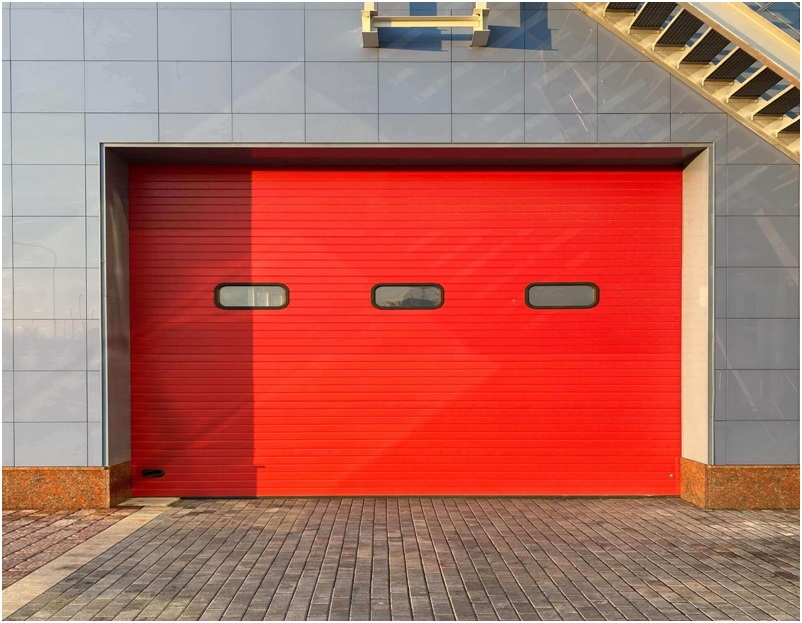How to Repair a Garage Door Opener Sensor

Garage door sensors can topple over fairly easily. It can be your children who can damage it while playing outside or your pets that can cause certain damages to it. However, the garage door sensor can be repaired easily. Sometimes the dirt blocks the sensor’s signals, so clean it before trying anything else. If this solution doesn’t work, look for any electrical issues. The sensors must be aligned perfectly and properly connected to the system to work. According to experts, sensor wiring problems are usually caused by incorrect wiring or a short circuit in the clasp. Here’s how you can repair a garage door opener sensor.
1. Clean the Garage Door Sensor If It is Dirty
By Master Lift Garage door sensors are only a few inches from the ground, so dust can easily build up in them. This happens mostly when a garage door is installed in such a way that it opens in the streets. Typically, water can stick to the sensor if you live in a very humid area or have a sprinkler near your garage door. This blocks the signals to the door and disturbs the operations. Moisture blocks the sensor from receiving the light. However, simply wiping the dust and moisture with a towel helps you get the sensor back to work.
2. Check Alignment and Wiring
If the garage door sensor is clean, there is a possibility of wiring issues or alignment. Here’s what experts suggest:
- Make sure the wiring between the sensor and the garage door opener is correct.
- Make sure the wires on the garage door opener are connected correctly.
- The solid white wire is connected to the white terminal, and the black wire is connected to the gray terminal.
3. Replace Garage Door Sensor Wiring
Sometimes garage door sensors fail due to damaged wires, pest invasion, or some other reasons. In this case, the sensor light will flash orange instead of red on most models. Once that happens:
- Inspect the wire connecting the sensor to the terminal on the back of the opener.
- Check the garage door cables if they are not damaged and if the wires are not linked or broken.
- Locate the knotted wires and inspect them to ensure they are properly connected to the terminals.
- Attach the white wire to the white terminal, and the black wires to the grey terminal.
- Inspect the wire for signs of chewing or tampering. Also, watch out for water damage. Water can short-circuit the sensor and cause it to malfunction.
- If the wire is damaged, it may need to be replaced. If you are not experienced, consider hiring an expert. Otherwise, you may get an electric shock.
4. Re-Align the Garage Door Sensor
Garage door functionality is sensor-dependent. However, if the emitter and receiver are not aligned, the receiver will not receive a signal from the emitter, and the door will not close. Here is how you can re-align your garage door.
-
Cut the Power
Cut the power which is given to the sensor. You can either turn off the breaker if the sensor is manually plugged or blow the fuses of your entire garage.
-
Loosen the screws
The next step is securing the sensor. Loosen the screws to loosen the garage door sensor mounting bracket. Just insert a screwdriver into the screw and turn it counterclockwise.
-
Move the sensor down
After loosening the screws and making sure the mounting bracket can slide up and down easily, push the garage door sensor down with your bare hands.
-
Tie a knot
Push the sensor as low as possible and attach one end of the rope to the mounting bracket and the sensor. Make sure that you tie the knot as tight as possible. The success of the entire procedure is highly dependent upon this step.
-
Check string level
Place a level under the row and make sure it goes straight through the garage door. Press it against the door line and hold it there for a few seconds.
-
Tighten the screws
When the level indicates that both sensors are at the same level, start tightening the screws. Tighten enough to see that the garage door sensor does not move in its new position even after applying force.
-
Last Step
After making sure that both sensors are aligned, remove the strap, power it back up, and test the sensor if it is working. If you have tied the knot properly, your garage door sensor will work.
5. Check the Power Supply
If both lights on the garage door sensor don’t come on, there may be a problem with the power supply. Check to see if there is a power outage in your area or a blown fuse in the circuit breaker. You can remove the garage door from the opener while checking for issues. This will ensure that you are able to manually operate your garage door until the power issues are resolved. The garage door opener and sensor must operate as soon as the power is restored.
Use the steps shared above to repair your garage door opener sensor, and if you cannot do it properly, then hire a professional technician to do the job for you.